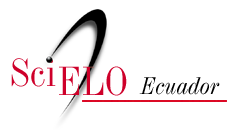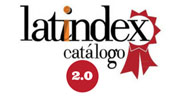Gestión del Gobierno Abierto y uso del portal de transparencia en una universidad pública peruana
DOI:
https://doi.org/10.29019/enfoqueute.799Palabras clave:
Gobierno abierto, portal de transparencia, participación ciudadana, información públicaResumen
Las universidades peruanas están obligadas a articular sus políticas bajo un modelo de Gobierno Abierto (GA) según la Ley n° 27 806 de Transparencia y Acceso a la Información Pública, con el propósito de garantizar la transparencia de la gestión institucional mediante la implementación de herramientas como portales web que garanticen una participación democrática digital. El objetivo del estudio fue determinar la relación entre la gestión del Gobierno Abierto y el uso del portal de transparencia en una universidad pública peruana. Para ello, se realizó una investigación básica de enfoque cuantitativo y diseño no experimental correlacional. Se aplicó una encuesta a través de dos cuestionarios a una muestra de 48 trabajadores encargados de publicar información. Los resultados y conclusiones revelan que el nivel de gestión del gobierno abierto y el uso de portal de transparencia son aceptables, con una correlación directa (r=0.5) y con un sig. unilateral igual a 0.000 (p valor<0.01). No obstante, existe desconfianza sobre la gestión del gobierno abierto y la utilidad del portal. Es decir, la institución superior adolece de estrategias o políticas de apertura gubernamental, lo que ocasiona baja participación pública en la gestión del gobierno universitario.
Descargas
Referencias
Arias, F. (2006). El proyecto de investigación. Introducción a la metodología científica. Editorial Episteme.
Castillo, G.; Murillo, D.; Berbey, A., y Álvarez, H. (2019). El acceso a la información: una propuesta en Panamá de Gobierno Abierto enfocados a contenido académico. Memorias De Congresos UTP: 113-120. https://revistas.utp.ac.pa/index.php/memoutp/article/view/2301
Cazzolli, A.; Echavarría, C., y Quevedo, C. (2020). Estrategias comunicacionales a partir de dispositivos de Gobierno Abierto en la provincia de Córdoba (Argentina). Revista de Tecnología y Sociedad, 10(19): 1-26. https://doi.org/10.32870/Pk.a10n19.549
Congreso de la República. (2003). Ley no 27806.- Ley de Transparencia y Acceso a la Información Pública. Presidencia de Consejo de Ministros. https://www.peru.gob.pe/normas/docs/ley_27806.pdf
Estermann, B. (2018). Development Paths Towards Open Government. An Empirical Analysis Among Heritage Institutions. Government Information Quarterly, 35(4): 599-612. https://doi.org/10.1016/j.giq.2018.10.005
Huamán Huamaní, E. (2020). El Gobierno Abierto en el Perú: compromisos y una buena práctica de integridad electoral. Huamán Huamaní. Saber Servir: Revista de la Escuela Nacional De Administración Pública, 4: 146-170. http://revista.enap.edu.pe/article/view/4167
Maldonado-Lozano, A; Paredes-Aguilar, L., y Palomino Alvarado, G. (2020). Gestión de Gobierno Abierto en las instituciones públicas: una revisión de la literatura. Sapienza: International Journal of Interdisciplinary Studies, 2(2): 137-152. https://journals.sapienzaeditorial.com/index.php/SIJIS/article/view/82
Moreno-Carmona, C.; Feria-Domínguez, J., y Troncoso, A. (2020). Applying the Open Government Principles to the University’s Strategic Planning: A Sound Practice. Sustainability, 12(5): 1826. https://doi.org/10.3390/su12051826
Negrete-Huelga, K., y Rivera-Magos, S. (2018). Estrategias de comunicación en redes sociodigitales desde la práctica del Gobierno Abierto. Cuadernos. Info, 42: 183-196. https://doi.org/10.7764/cdi.42.1242
Plantinga, P., y Adams, R. (2021). Rethinking Open Government as Innovation for Inclusive Development: Open Access, Data and ICT in South Africa. African Journal of Science, Technology, Innovation and Development, 13(3): 315-323. https://doi.org/10.1080/20421338.2020.1746046
Porumbescu, G., Cucciniello, M., Y Gil-Garcia, J. (2020). Accounting for Citizens When Explaining Open Government Effectiveness. Government Information Quarterly, 37(2): 101451. https://doi.org/10.1016/j.giq.2019.101451
Presidencia del Consejo de Ministros. (2010). Decreto Supremo que aprueba la implementación del Portal de Transparencia Estándar en las Entidades de la Administración Pública. PMC. http://www.oas.org/juridico/PDFs/mesicic4_per_ds063.pdf
Romero, L. (2019). Una aproximación teórica al Gobierno Abierto. Cuestiones Políticas, 34(60): 69-91. https://produccioncientificaluz.org/index.php/cuestiones/article/view/29127
Saraite, L.; Caba, C., y López, A. (2020). Expanding the Actions of Open Government in Higher Education Sector: From Web transparency to Open Science. PLOS ONE, 15(9): 1-18. https://doi.org/10.1371/journal.pone.0238801
Shepherd, E., et al. (2019). Open Government Data: Critical Information Management Perspectives. Records Management Journal, 29(1/2): 152-167. https://doi.org/10.1108/RMJ-08-2018-0023
Vera Martínez, M. (2018). Los datos abiertos y el plan de acción de gobierno abierto en México 2013-2015. Nóesis. Revista de Ciencias Sociales y Humanidades, 27(54): 1-18. https://doi.org/10.20983/noesis.2018.2.1
Vizcarra Mamai, F., et al. (2020). Gobierno electrónico y participación ciudadana en la municipalidad de Los Olivos 2018. Revista Inclusiones, 7: 160-180. http://www.revistainclusiones.org/index.php/inclu/article/view/1203
Wang, V., y Shepherd, D. (2020). Exploring the Extent of Openness of Open Government Data. A Critique of Open Government Datasets in the UK. Government Information Quarterly, 37(1): 101405. https://doi.org/10.1016/j.giq.2019.101405
Wirtz, B.; Weyerer, J., y Rösch, M. (2018). Citizen and Open Government: An Empirical Analysis of Antecedents of Open Government Data. International Journal of Public Administration, 41(4): 308-320. https://doi.org/10.1080/01900692.2016.1263659
Zuiderwijk, A., y de Reuver, M. (2021). Why Open Government Data Initiatives Fail to Achieve Their Objectives: Categorizing and Prioritizing Barriers Through a Global Survey. Transforming Government: People, Process and Policy. https://doi.org/10.1108/TG-09-2020-0271
Publicado
Número
Sección
Licencia
Derechos de autor 2022 Los Autores

Esta obra está bajo una licencia Creative Commons Reconocimiento 3.0 Unported.
Los autores retienen todos sus derechos (© copyright).
- Los autores retienen sus derechos de marca y patente, y también sobre cualquier proceso o procedimiento descrito en el artículo.
- Los autores retienen el derecho de compartir, copiar, distribuir, ejecutar y comunicar públicamente el artículo publicado en Enfoque UTE (por ejemplo, colocarlo en un repositorio institucional o publicarlo en un libro), siempre que se dé el reconocimiento de su publicación inicial en la revista Enfoque UTE.
- Los autores retienen el derecho a hacer una posterior publicación de su trabajo, de utilizar el artículo o cualquier parte de aquel (por ejemplo: una compilación de sus trabajos, notas para conferencias, tesis, o para un libro), siempre que indiquen la fuente de publicación (autores del trabajo, revista, volumen, número y fecha).
























